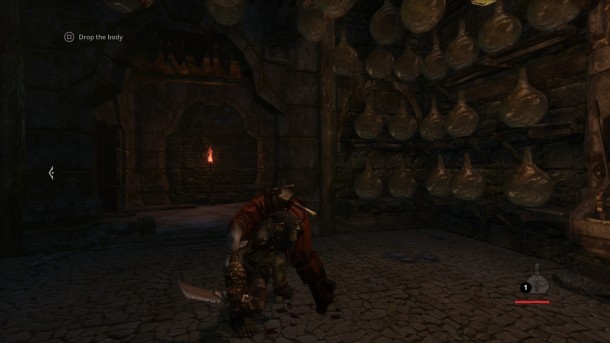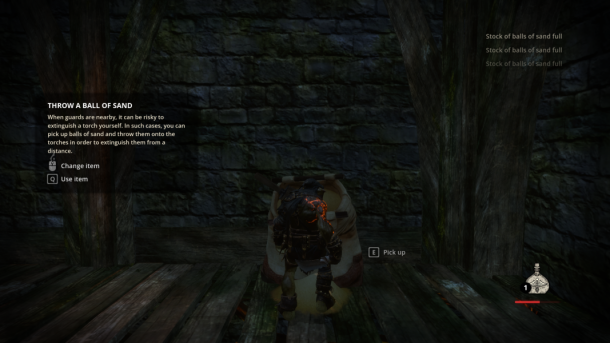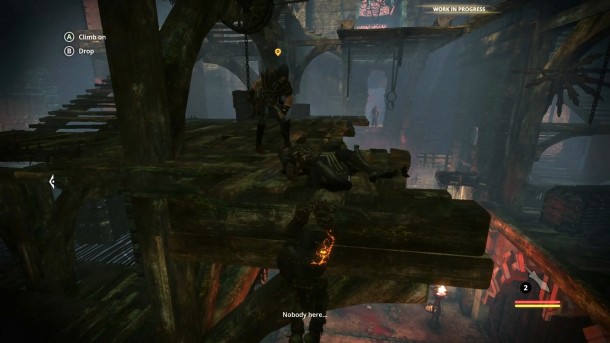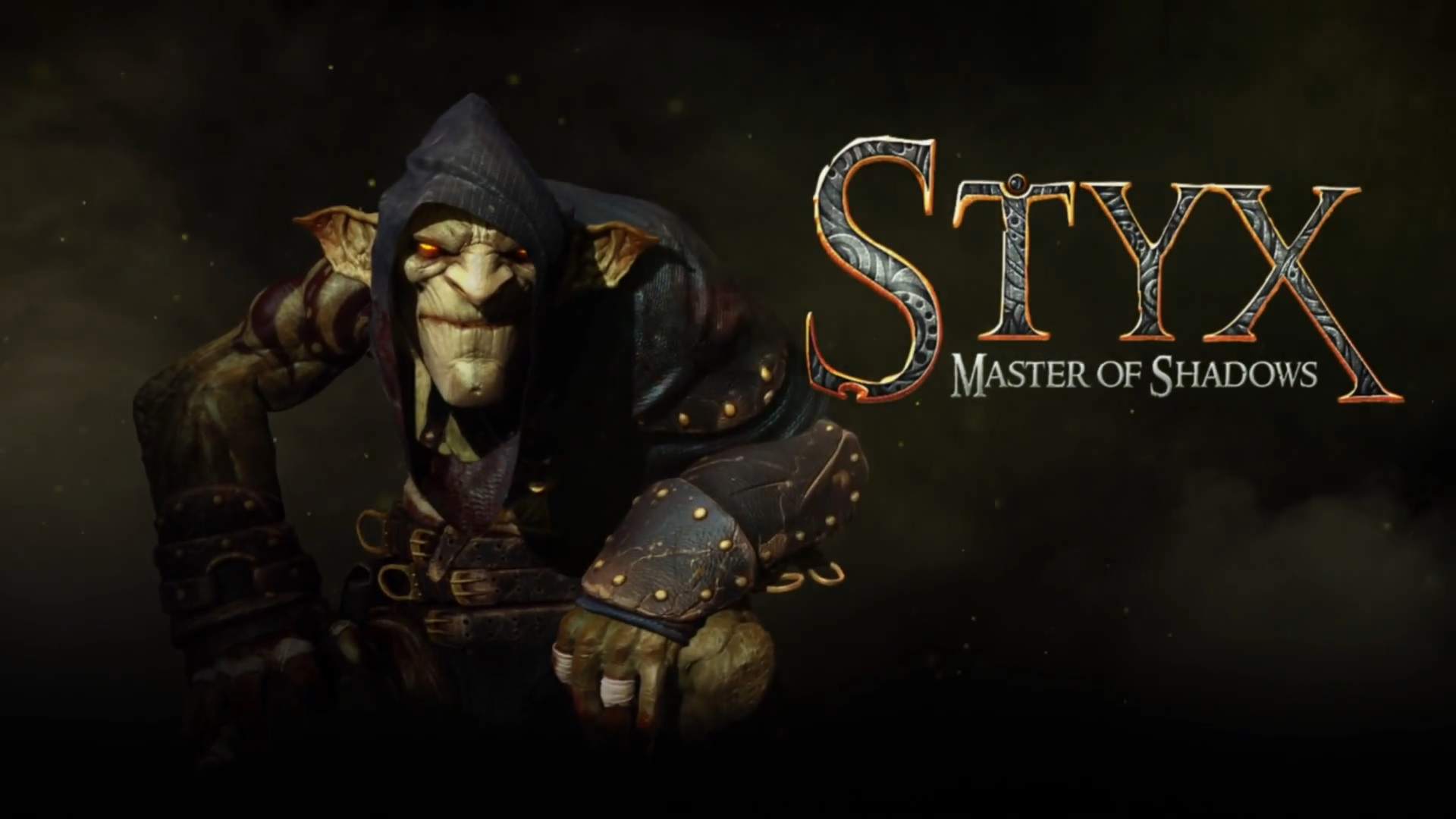There was a point during my review of Cyanide Studios’s Styx: Master of Shadows that I questioned whether I was still a good gamer. I was having such a difficult time at a seemingly impossible section of the game that I almost gave up on it entirely. Of course, giving up on a game you’re reviewing is generally not a good best practice, and so I continued to stockpile corpses at the problem until the solution, at last, presented itself to me. Or, I should say, I stumbled onto an alternative route after accidentally falling off a ledge. And that’s Styx almost in a nutshell: it is a game that will punish you for trying to brute-force your way through a level, and demands that you play smarter.
Styx: Master of Shadows is a stealth game, and you will never escape this fact throughout your many hours with it. You play the part of Styx, a goblin in a world dominated by humans and elves (it’s worth noting that this game is a prequel to Of Orcs and Men). The story will reveal itself through cut-scenes before and after each chapter (there are 7), as well as a few minor self-reflective moments that occur during gameplay. Characters are voiced well enough, which is good, because the writing in the game is pretty awful at times.

The story at its core (which will get fairly convoluted), centers around a substance known as Amber, which the humans control through the World Tree, but forbid others from using. Styx is dealing with a bout of amnesia, and so you are learning about the world around you as Styx does. The concept is well worn, as gaming tropes go, but Master of Shadows does a good job of adding a few twists that stop the storyline from becoming too predictable.
Fortunately, there’s more to this game than story. Controlling Styx, you will be lurking in shadows, hanging from ledges, jumping across pits, and avoiding detection (or creating distractions). You have an assortment of skills and items at your disposal to make your job easier, and just about everything is available from the outset. Skills include Amber vision, which will highlight special items and enemies, Invisibility, and the ability to summon clones that can do some menial tasks (scouting, pulling levers, poisoning water supplies, or causing a distraction to name a few). These skills can be upgraded as you play to be more effective or add new abilities to those skills (clones can gain the ability to kill enemies from hiding places, for example). Items that you can carry include balls of sand that can extinguish torch lights, knives that can dispatch some enemies, health and amber potions, and acid vials that will remove corpses. You will utilize all of your skills and items often, with the possible exception of the acid vial (which I found had limited real-world usefulness).

You will put these skills and items to use in the various levels, each of which is essentially a “go from point A to point B” mission. Occasionally you may be tasked with a secondary objective, such as collecting an item or killing an NPC. Performing these tasks will give you more skill points upon level completion which, as you probably guessed, you can spend to improve your skills. There are bonuses from completing levels quickly, without being detected, and/or without killing people.
Going through the levels without being detected will be fairly straight-forward at first. Alternate paths are never highlighted by the game (there’s no golden trail showing an ideal path), but you will be able to see tunnels or ledges that can be exploited to avoid detection. The game also provides a visual indicator to how well Styx is hidden, in the form of glowing skin that will be brighter when in shadows (which also helps you see your character in full darkness, even if the concept of something glowing in the dark being “unseen” is, in fact, ludicrous). You’d be forgiven if you thought (like I did) that identifying the “unseen” path in each level is going to be easy. However, the game will ratchet up the difficulty fairly quickly, and the unseen path will soon be neither obvious nor simple. Patient exploration through the use of clones, observation of enemy pathing and liberal use of amber vision to identify special areas will be needed. Fortunately, clones and amber vision can be used endlessly – you will always regenerate just enough to get a few seconds of vision, or to spit out a clone when one dies.
And speaking of death, let’s just get this out of the way: you will die. A lot. Make liberal use of the quick-save functionality, because the auto-save checkpoints are few and far between. A lot of my early deaths were around some of the platforming aspects of the game; jumping is a little inconsistent at times, and there is very little assistance from the game in latching you to ledges that you’re jumping towards (playing Assassin’s Creed after this will make AC feel like every ledge has magnets, and you’re Iron Man). To call the game unforgiving would be fair, but it reinforces the concept of patience. Each jump is doable on its own, and you never need momentum from the prior jump to make the next, so you don’t have to rush things to get them done.

Screwing up jumps isn’t the only way to die – direct confrontation with multiple enemies will also result in a pulverized goblin in short order. The combat system itself is extremely basic; if you get into melee range with an enemy that is looking for you, you will lock into combat (you can run away after this, however). Combat consists of waiting for the right time to parry, and killing the opponent after parrying a certain number of times. This is all done with one button. The problem is that while you’re engaged with a single opponent, all other enemies are still actively hitting you, so you generally cannot survive a situation where more than 2 enemies are in combat range. And before you think I’m criticizing the combat system, let me be clear in saying I’m not. I think the watered down (and punishing) combat is reinforcement by the developers that fighting your way through a level is the wrong way to play the game. Dispatching your enemy needs to be done from the shadows, not out in the open. And so, even though the combat system is pretty awful, I think it was intentional. Also, combat with a single, isolated enemy is relatively safe, and can be an effective way to dispatch someone if you botch your attempt to be stealthy.
My review of this game wouldn’t be complete without explaining the frustration I explained in the first sentence. When I started playing this game, I decided I would try to play the game without killing anyone. I did a similar style of gameplay when reviewing Deus Ex: Human Revolution, and really enjoy playing games in this fashion. I balked at some of the early secondary missions that involved assassinating people, but otherwise I kept my blade in its sheath, and stealthed my way around the levels. The problem I encountered was that later levels became so frustrating to play in this style that I had to abandon it. All of the skill points that I had applied to non-lethal skills were not helping me enough, and I was not getting enough guidance from the game on what the path I should be looking for was. Perhaps this is a shortcoming on my part, and I’m not holding it against the game (particularly considering that stealthy lethal force is a very satisfying component of the game as well), but I was a little bummed that I had to give up one playstyle in favor of another. Once the killing did start, however, I was able to resume my progress fairly easily. I guess my takeaway from this that I impart on the reader is to embrace the ruthless role of Styx; let the corpses pile up, and perhaps you’ll avoid some of the self-imposed frustrations that I experienced. That’s not to say the game becomes EASY, it’s just that by allowing yourself to use all of the tools in your arsenal, you’ll be able to progress faster, and die less. And by less I mean maybe 10 times instead of 30.
Styx: Master of Shadows is not a perfect game. It can be buggy, the writing is laughable at times, the AI is basic, the combat is (in my opinion) intentionally awful and the platforming aspects can frustrate. And yet despite all this, Styx was still mostly enjoyable for me, once I utilized all of the tools available. Delivering death from the shadows (or better yet, sneaking by undetected entirely) is a rush, and the game offers many different ways to accomplish a given task. It might not win any awards, but if you enjoy these types of games it’s worth a playthrough. It’s unapologetically difficult at times, and does not hold your hand at all once it explains the basic concepts, but I find this harkens back to a time when games rarely did so: when you were left to your own devices to get through a difficult part. Back when gamers wore out their F5 keys.
This review is based on a code for Steam sent to SideQuesting by the publisher.


No Comments